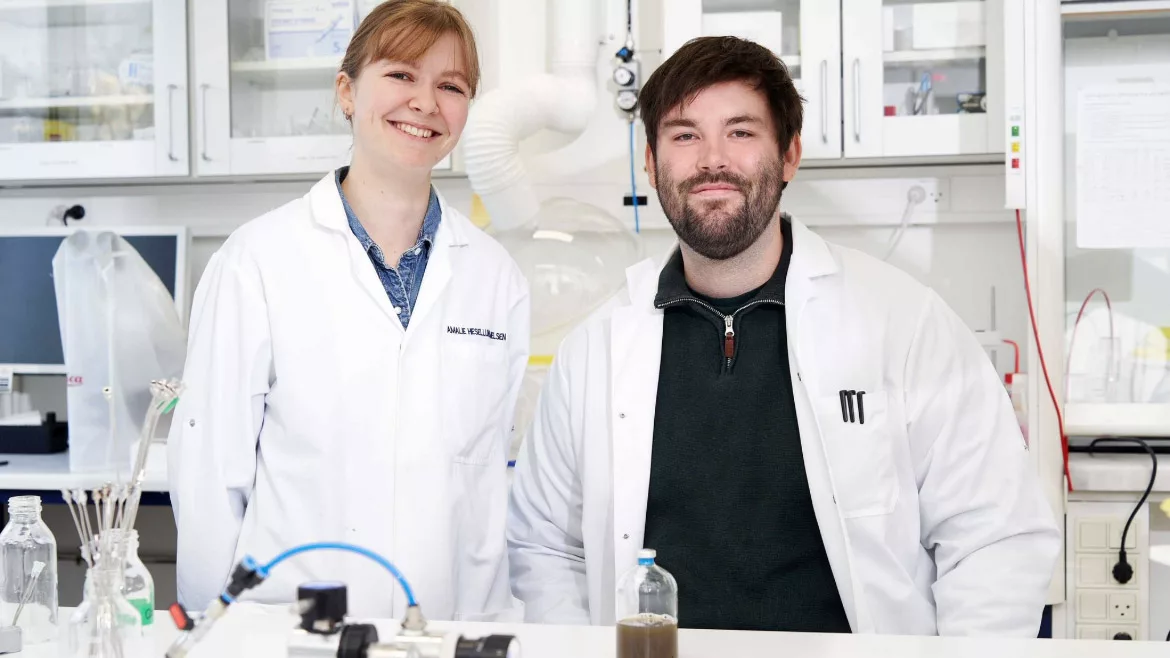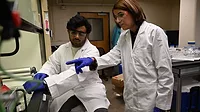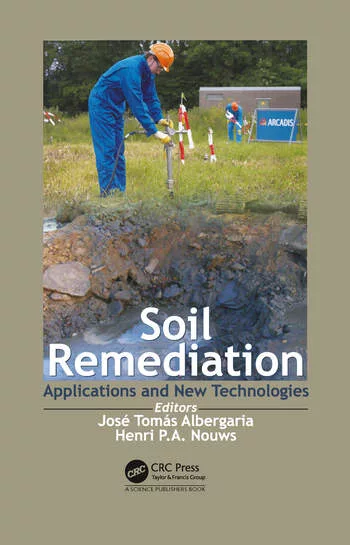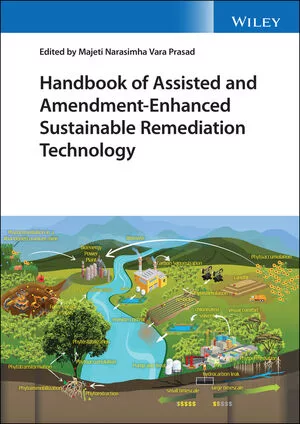New Technology Could Turn Smoke and Flue Gases into Valuable Products
The system still has some kinks to work out: It needs hydrogen to function, which is currently a limiting factor

Amalie Kirstine Hessellund Nielsen, a PhD student at the Department of Biological and Chemical Engineering, stands next to Postdoc Mads Ujarak Sieborg.
Credit: Peer Klercke
A breakthrough development could change the game for the chimney industry: scientists have figured out a way to take what chimney professionals typically scrape out of flue systems and turn it into something valuable. Danish researchers at Aarhus University have developed a system that uses special bacteria to eat up flue gases and fire byproducts, converting them into useful fuels and chemicals.
For heating industry professionals who spend their days dealing with creosote buildup and explaining to homeowners why chimneys need cleaning, this technology could be a glimpse into the future of the industry. Instead of treating flue gases and carbon buildup as waste products that need to be removed and disposed of, this new approach could transform them into valuable resources.
"What comes out of the microorganisms is green natural gas or acetic acid or other chemical building blocks that industries can use," explained Mads Ujarak Sieborg, one of the lead researchers. In simple terms, they're taking the same carbon compounds typically removed during cleaning and turning them into useful products.
The system works differently from traditional carbon capture methods. Rather than using high heat (120-140 degrees Celsius) to process the gases, these bacteria do the work at much lower temperatures. "Microorganisms are hyper-specialized in absorbing and converting these gases, and they've been perfecting this process for billions of years," Sieborg said. "Instead of using heat, we add microorganisms that can extract the carbon dioxide from other chemicals, saving money on heating bills."
For industrial clients with large heating systems or industrial chimneys, this could be particularly interesting. Currently, dealing with flue gases is a major expense, especially in industrial settings where emissions are strictly regulated. This new approach could turn that cost center into a potential revenue stream.
"In a net-zero future, we need to use technology that recycles the CO2 we capture instead of continuing to extract more from the ground," said Amalie Kirstine Hessellund Nielsen, another researcher on the project. While the technology isn't ready for residential chimneys yet, it could start showing up in industrial applications where flue gas management is a major concern.
The system still has some kinks to work out. It needs hydrogen to function, which is currently a limiting factor. But as Nielsen noted, "There remain some challenges before we have a finished technology, but there are also solutions to the problems. We already have a wide range of different reactors to test."
For the chimney service sector, this development is worth monitoring. While traditional cleaning and creosote buildup management in residential settings will remain necessary, this technology could eventually change how waste products from larger commercial and industrial clients are handled. Instead of simple removal and disposal of these byproducts, the future might involve collecting them for recycling into useful materials.
The researchers emphasize that while this won't replace regular chimney maintenance or eliminate the need for proper venting systems, it's an important step toward making the industry more sustainable. As regulations around emissions continue to tighten, particularly for industrial clients, having new options for handling flue gases and their byproducts could become increasingly valuable.






